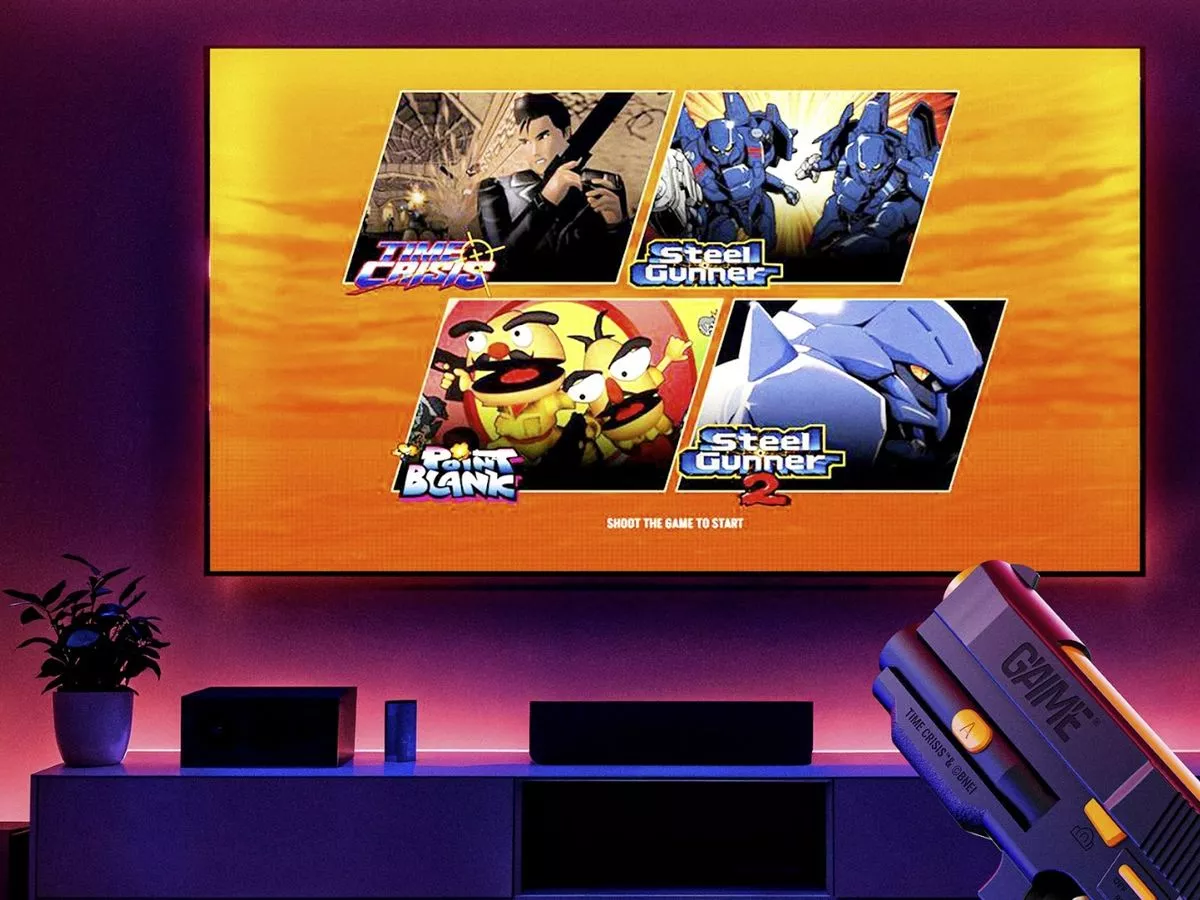Copyright mirror

After getting some serious hands-on time with the upcoming G‘AIM’E plug-in-and-play lightgun, it's shaping up to be the ideal way to recapture the magic of arcade shooters. Having already helped countless hardware manufacturers bring their own third-party gaming products to market over the years, the G‘AIM’E plug-in-and-play lightgun very much feels like the ‘fine, I’ll do it myself' moment for Japanese accessories specialist Tassei Denki. In fairness, it’s not a bad audience to try to appeal to at the moment. Particularly since the demand for gaming-related peripherals that may have been considered niche just a few years ago – such as the PDP Riffmaster and the CRKD Guitar Controller , more recently – continues to stay on the rise. Millennials have disposable income and want to spend it to recapture their youth? Who knew. More so than most other nostalgia-influenced products before it, however, G‘AIM’E represents a concerted attempt to recapture the magic of late 90s arcade lightgun shooters within the home. Better yet, it hopes to do so without the use of any annoying sensor attachments. It’s a bold ambition, for sure, yet after getting to use it with the likes of Time Crisis and Point Blank myself, I can comfortably say pointing and shooting on a modern LCD TV felt like stepping back in time. The first thing to mention about G‘AIM’E is obviously the hardware itself. For the self-proclaimed ‘Basic’ bundle, players can expect to receive an authentically designed gun peripheral with a 3-metre cable, a matte-black mini-console that comes with the original Time Crisis installed, a standard USB-C power cable, and a HDMI lead. In other words, it’s everything you need to get started with Bandai Namco’s original 1995 classic! The most authentic experience, though, comes for players willing to upgrade to either the Premium or Ultimate tier bundles, both because they come packing three additional games – Point Blank, Steel Gunner, and Steel Gunner 2 – but also a dedicated pedal. G‘AIM’E differs from previous attempts to capture the lightgun spirit, though, by using AI (the good kind) to better and more accurately track your aim. The setup process, though a tad laborious, requires you to shoot nine different targets on the screen upon startup, whereby the tracking technology in the gun will be able to gain a sense of your aim and accurately replicate it from thereon out. I call it ‘laborious’ because I had to undergo this process more than a few times during my 30 or so minutes playing Time Crisis with the G‘AIM’E gun. It occurred any time I pulled too hard on the wire and disconnected the USB-C cable, but honestly, it seemed that even a few minor movements of the mini-console were enough to disturb the setup. That said, for folks not as tall as me, I imagine this will be less of an issue. Whether you want to play on an OLED, LCD, LED screen, or even a projector, the G‘AIM’E gun promises to work on every type of monitor – regardless of its size. In fact, during my hands-on demo session, I was given the option to play on a projector right there and then. This would have been cool and all, but the cheeky QA tester in me instead wanted to check how the G‘AIM’E gun held up in different light levels. My aim in Time Crisis remained precise in a well-lit room – over 40% accuracy, I’ll have you know – but equally when switching nearly all the lights off and firing in an overwhelmingly dim space, G‘AIM’E still performed surprisingly well. During my session, my mind already began to wander while playing what would happen if I, say, took the demo unit along to my local cinema and hooked it up to such a giant screen. Birthday parties would probably never be the same, I promise you. In addition to the performance feeling pretty authentic to how I remember playing the likes of Point Blank using the cabinet and pedal setup in arcades, then, Tassei Denki is also being pretty meticulous in terms of offering up players plenty of options too. I personally played Time Crisis, not using the original cabinet’s pedal function to duck in and duck out of cover, for example, but at home on my PS1 using the gun peripheral’s side button. Well, what do you know, alongside the ability to switch the gun's slight haptic rumble on and off, an additional side button has been neatly integrated on the G‘AIM’E unit’s left side. Pressing this worked a lot better for me when it came to reloading and taking cover, I found. All that said, the pedal was perfectly responsive too, even if stepping forward and back constantly did sometimes mean sacrificing accuracy – at least in my case. The manufacturers are acutely aware of this pedal or side button conundrum being an oddly specific personal preference based on how you played these games growing up. As such, G‘AIM’E has been careful to cover both avenues. Slightly less successful is the G‘AIM’E gun’s aforementioned rumble button, which obviously isn’t able to replicate the loud kickback action the gun offered in arcades. But in all honesty, it still does offer a nice sense of feedback (if you want it). Honestly, my only real concern with the G‘AIM’E lightgun right now isn't anything to do with the AI technology's accuracy. Less ideal is the potentially confusing nature of what all three SKUs offer, the limitation of the games included, and the price. The Basic package of just a gun and Time Crisis, for instance, feels like not a lot for the entry fee. £99 is simply a big ask to be able to play just one game, however authentic it might come across. In my mind, prospective purchasers will be far better served by picking up either the Premium or Ultimate packages, both of which come with those three additional Bandai Namco games and a pedal, while the latter includes a second gun. Though it incurs a higher cost, it's simply a better way for futureproofing this brand of lightgun fun. Although it’s been done for totally understandable reasons, Tassei Denki has been pretty forthcoming with regards to its approach for future game support, and as it stands the current games lineup won’t be expanded upon. Players who pick up the Basic bundle therefore wont be able to enjoy Point Blank or either Steel Runner games at a later date. This is partly because of licensing agreements made exclusively with Bandai Namco, at least for now, but also to dissuade hackers that could potentially disrupt the authentic lightgun experience in the home G‘AIM’E seeks to offer by loading up the dedicated mini-console that includes countless ROMs. Provided you know this going in, however, nobody should feel shortchanged. I came away from my 30-minute preview session with the G‘AIM’E lightgun amazed just how much playing Time Crisis and Point Blank in particular felt like it used to – both in the arcade itself as well as at home on my PS1. Everything from the gun peripheral, to the pedal and crystal case design of the mini-console itself, screams of retro authenticity – and so far this is something that promises to be matched by the system’s performance too. Price may still be a barrier for some, but luckily, with G‘AIM’E set to launch as early as mid-November for most, it’s not too much longer until the timelessness of Time Crisis (and a few other lightgun classics) can be put to the test.



